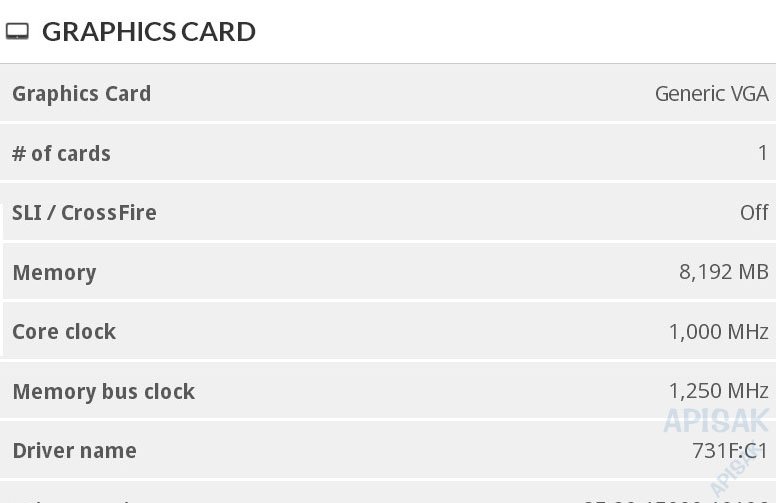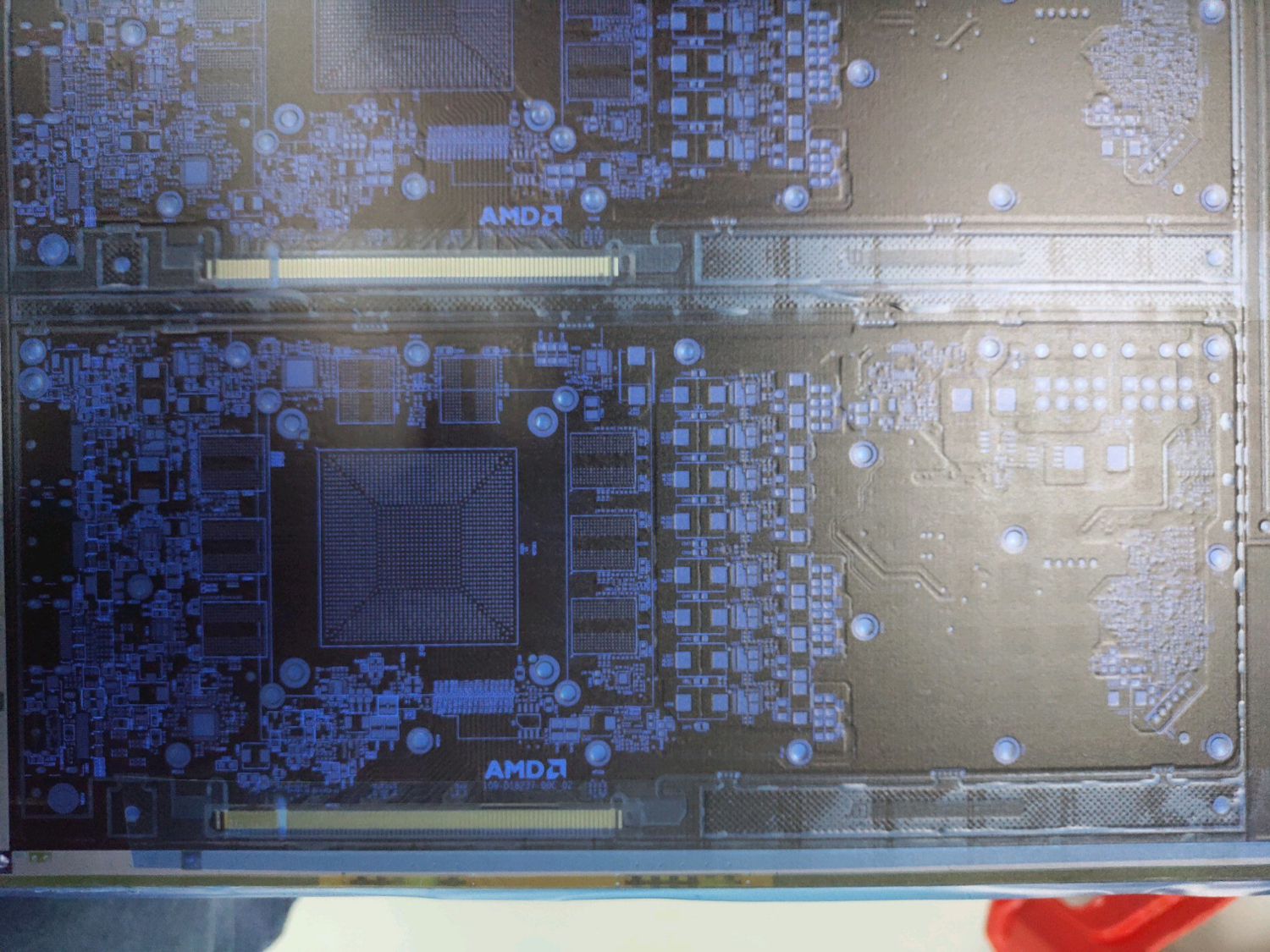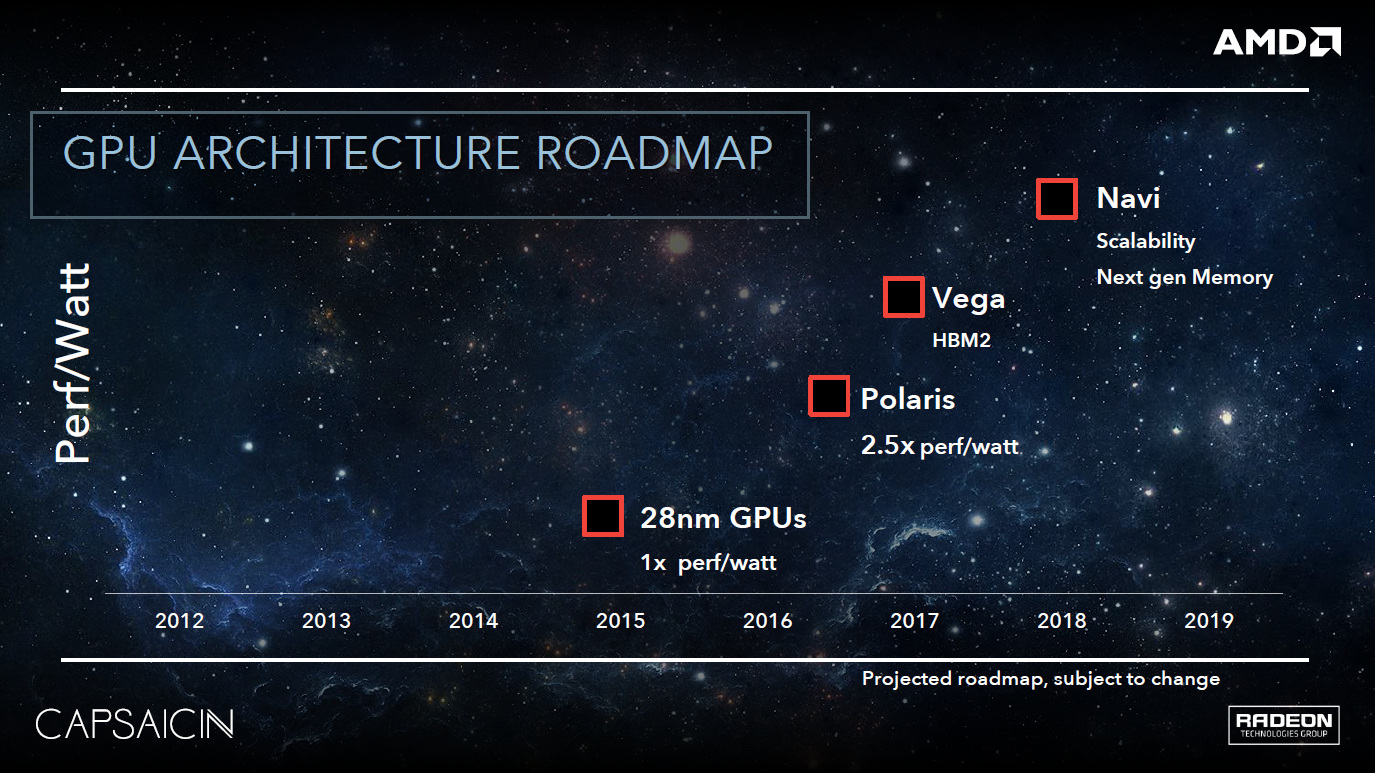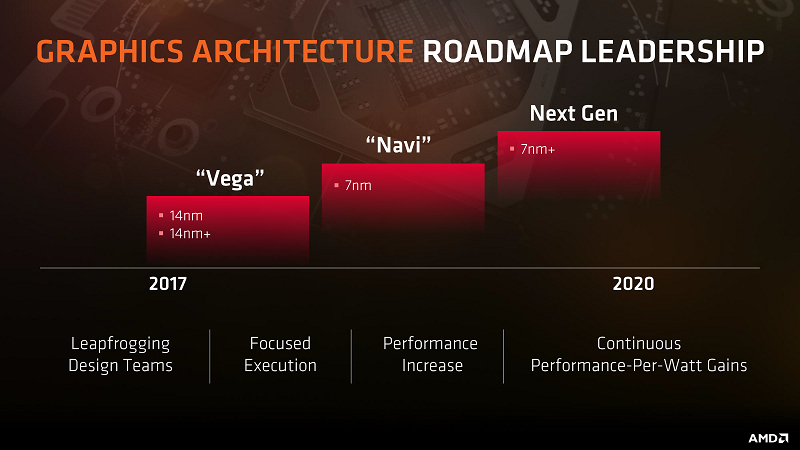AMD Navi GPUs: Rumors, All We Know
UPDATE: AMD held it's Computex 2019 keynote here in Taipei, revealing the Radeon RX5000 series of Navi graphics cards. We're working to update this article with the new information, as there are still plenty of details that still remain unknown. In the meantime, head over to our full announcement of AMD's Navi graphics cards and new RDNA architecture for extra details.
Enthusiasts and PC gamers have been eager for AMD to make a comeback in the graphics card market, at least since the Vega launch in mid-2017 made it clear that Nvidia was to go unchallenged at the top of the GPU hierarchy stack. Nvidia's latest GeForce RTX 20-series and previous GTX 10-series graphics cards continue to dominate the gaming market. AMD's next generation of GPUs could be the kick the market needs to drive performance forward and prices down. At the very least, they should be an improvement over the company's retread Polaris-based parts, like the Radeon RX 590.
AMD's forthcoming Radeon gaming graphics cards will be based on the new Navi GPU architecture. Multiple leaks suggest that Navi will be produced with TSMC's 7nm process node. In November, AMD announced the world's first 7nm-based graphics cards in the form of the Radeon Instinct MI60 and MI50 accelerators for the data center. And in February, it released the world’s first 7nm gaming GPU, the Radeon VII. So it's not unrealistic to assume that Navi will come out of TSMC's 7nm oven as well.
AMD CEO Lisa Su recently announced that Navi will come in the third quarter of 2019, meaning that it won't be long before these new GPUs land on shelves. Let's examine that that might look like.
Alleged Navi Graphics Cards Benchmarks Surface
The latest addition to the Navi rumor mill comes from TUM_APISAK. The respected leaker discovered two device ID that are supposedly Navi-based Radeon gaming graphics cards.
The graphics card with the 731F:C1 label, which was discovered in 3DMark, comes with a 1,000 MHz boost clock and 8GB of unidentified memory operating at 1,250 MHz. Assuming that the previous PCB leak is legit, the graphics card should be sporting GDDR6 memory, which brings to the effective memory clock to 10,000 MHz.
The other graphics card with the 7310:00 device ID appeared in Ashes of the Singularity (AoTS) database. Unfortunately, TUM_APÏSAK didn't share the specifications for this variant. However, the graphics card is the same one that popped up a few months ago on GFXBench. It's thought to be Navi 10, which allegedly is the Radeon RX 3080.
Get Tom's Hardware's best news and in-depth reviews, straight to your inbox.
Purported Navi PCB Pops Out Of Nowhere
Images of an unknown AMD PCB (printed circuit board) points to the possibility that it's an engineering sample for an upcoming Navi graphics card. The schematics suggests that the Navi die could measure around 200 to 230 mm². There is also spacing for eight GDDR6 memory chips. The initial speculation is that this particular Navi graphics card could feature a 8GB or 16GB memory configuration that can potentially operate across a 256-bit memory bus.
There are also traces on the PCB for an eight-phase power delivery subsystem, two 8-pin PCIe power connectors, and the addition of a USB-C port, which is probably there for connecting virtual reality headsets. According to the layout of the holes on the PCB, this specific Navi product is likely to come with a reference blower design.
Navi Finds Its Way Into Next-Generation Sony Playstation
Sony has expanded its partnership with AMD to feature the chipmaker's upcoming Zen 2 processors and Navi graphics card in the next installment in the PlayStation series of gaming consoles. PlayStation 4 lead architect Mark Cerny has confirmed that the next PlayStation will indeed be powered by a custom-tailored graphics solution based on the Navi architecture, which was confirmed by AMD CEO Lisa Su.
Mark Cerny was careful not to reveal too much about the Navi unit. However, he did say the PlayStation will support ray tracing, and therefore, it's safe to assume that Navi will most likely come with native support for ray tracing.
HWiNFO, a widely-used system information and diagnostics utility, added preliminary support for Navi not so long ago. This could be a clear indication that there are already Navi samples out in the wild and that we could expect a surprise from AMD very soon at Computex 2019.
The AdoredTV Leak
Jim Parker from AdoredTV released a controversial video in December where the Scottish YouTuber revealed what he said are specifications for three purported upcoming Navi graphics cards. Parker’s leaks have been accurate in the past, but as with any leaked information, you should take unverified information for what it is. This is far from confirmed info.
As reported by AdoredTV, AMD will purportedly use a new nomenclature for its future graphics cards. It’s claimed the first batch of Navi products will launch with the Radeon RX 3000 moniker, as opposed to the RX 600-series naming scheme.
From a marketing perspective, this would make a lot of sense. By claiming the 3000-series branding, AMD would effectively lock Nvidia out from using it for the successors of the GeForce RTX 20-series of gaming graphics cards, while also matching up with AMD's upcoming Ryzen 3000 CPUs. And given how much success AMD has had lately with its Ryzen CPUs, it makes sense from a branding perspective to hitch its new graphics cards to its CPU wagon.
AMD Radeon RX 3000: A New Era Of Radeon Graphics Cards
According to the leak, the Radeon RX 3080, RX 3070 and RX 3060 will be the first graphics cards to compete with Nvidia's current GeForce RTX 20-series, and they'll come at pretty aggressive price points, too. The Radeon RX 3080 is said to be the rival to the existing GeForce RTX 2070, while the Radeon RX 3070 and RX 3060 would tackle the RTX 2060 and (presumed) GTX 1650 models, respectively.
| Header Cell - Column 0 | Radeon RX 3080 | Radeon RX 3070 | Radeon RX 3060 |
|---|---|---|---|
| Architecture (GPU) | Navi 10 | Navi 12 | Navi 12 |
| Memory Capacity | 8GB GDDR6 | 8GB GDDR6 | 4GB GDDR6 |
| TDP | 150W | 120W | 75W (no 6-pin) |
| Pricing | $249.99 | $199.99 | $129.99 |
| Competition | RTX 2070 / GTX 1080 | RTX 2060 / GTX 1070 | GTX 1650 / GTX 1060 |
The Radeon RX 3080 will supposedly employ AMD's Navi 10 silicon produced with TSMC's 7nm FinFET manufacturing process and come equipped with 8GB of GDDR6 memory and a modest 150W TDP (thermal design power) rating. Performance-wise, the Radeon RX 3080 is believed to be 15 percent faster than AMD's current Radeon RX Vega 64 graphics card. The Radeon RX 3080 is expected to carry a $249.99 (~£197.55) price tag.
Although the Radeon RX 3070 will reportedly come with 8GB of GDDR6 memory, this model will purportedly use Navi 12 silicon instead. The graphics card's performance is reportedly similar to that of the RX Vega 56 model, but with a 120W TDP. The estimated price for the Radeon RX 3070 is said to be $199.99 (~£158.08).
Much like its older sibling, the Radeon RX 3070, the Radeon RX 3060 will allegedly make use of AMD's Navi 12 die. However, the Radeon RX 3060 is the only model of the trio that’s expected to come with 4GB of GDDR6 memory. It said to have a 75W TDP and not depend on a supplemental 6-pin PCIe power connector, drawing all the power it needs from the x16 slot. In terms of performance, the Radeon RX 3060 should perform similarly to the Radeon RX 580. The Radeon RX 3060 should cost around $129.99 (~£102.73).
Rumor also has it that AMD Navi will unite with the Zen processor architecture in the SoC, allegedly called Gonzalo, to be used in the next Xbox and PlayStation consoles.
And this month, a patent filing from 2017 came to light showing AMD’s interest in variable rate shading (VRS) technology, which is already found in rival Nvidia’s Turing architecture. Naturally, the revelation prompted speculation that Navi GPUs will therefore offer VRS.
AMD Navi Release Date?
AMD CEO Lisa Su during her CES keynote famously stated “you will hear more about Navi in 2019.” AMD launched its 7nm Radeon Instinct MI60 and MI50 data center graphics cards at Computex 2018, so it’d make sense for AMD to launch Navi at a major event.
However, in January rumors started surfacing that AMD will announce Navi in June during the E3 conference, with a hard launch following in July. An E3 announcement isn’t far-fetched, especially if Navi will indeed appear in the next Xbox and PlayStation, which could very well be announced during the video game-focused conference. According to Red Gaming Tech, July will see the launch of a lower-end Navi, with higher-end models “supposedly arriving in 2020.” However, some (including Red Gaming Tech) suggest that the 2020 launch will actually be Arcturus, Navi’s successor.
In either case, AMD's announcement that Navi will arrive in the third quarter of 2019 means that it won't take too much longer to sift out the truth from the fiction in the recent leaks. We'll update as we learn more.
Want to comment on this story? Let us know what you think in the Tom's Hardware Forums.

Zhiye Liu is a news editor, memory reviewer, and SSD tester at Tom’s Hardware. Although he loves everything that’s hardware, he has a soft spot for CPUs, GPUs, and RAM.





